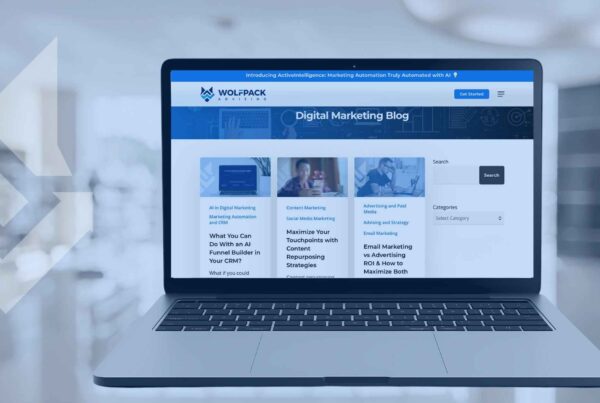Last updated on October 31st, 2025 at 11:46 am
Every marketer has an opinion, but not all opinions make it into the company group chat. So we asked our servicing team to share the thoughts that usually stay behind the scenes. These possibly controversial hot takes come from the people who have seen what works, what fails, and what most marketers tend to overcomplicate.
Some might surprise you. Some might make you laugh. And a few might make you rethink how you approach your own marketing strategy.
Contents
What Counts as a Hot Take?
A hot take is a strong, unconventional opinion that challenges common thinking. It is not just a random statement meant to get attention.
A real controversial hot take questions the status quo and backs it up with evidence, results, or firsthand experience.
| Hot Take | Just Incorrect |
|---|---|
| “Ranking first doesn’t guarantee results.” | “SEO doesn’t matter anymore.” |
| “AI can improve content if humans refine it.” | “AI can replace content teams.” |
| “Posting less often can outperform posting daily.” | “Posting schedule has no impact at all.” |
| “Short blogs can rank if they’re clear and useful.” | “Word count is irrelevant.” |
In digital marketing, controversial hot takes push professionals to look beyond trends that sound good on paper but fail in practice. They help separate what actually works from what just looks impressive online.
Our team monitors metrics through Google Analytics 4, HubSpot, and other reporting tools to understand what drives clicks, conversions, and engagement for home-service clients nationwide.
When you work with as many marketing channels and client types as we do, certain patterns start to repeat themselves.
When we share a bold opinion, it is not based on theory. It is based on patterns we have seen repeatedly across different industries, audiences, and markets.
Each take below represents a lesson learned through real campaigns and measurable results.
SEO and AEO Hot Takes
Our SEO specialists live inside analytics dashboards. They track thousands of keywords and conversions each quarter and know when old SEO rules stop working.

1. Just “ranking first” is an ego goal, not a business goal.
Getting to the top of the page looks good in a report, but it does not always drive revenue. That’s especially true now, in the age of AI visibility and searches on social platforms.
A lower-ranked page that keeps readers longer and converts more visitors can deliver a stronger ROI. Real success in search comes from visibility that generates qualified leads, not empty impressions.
2. AI Overviews aren’t a threat to SEO. They are a new spotlight for brands that earn it.
Instead of worrying about AI summaries stealing clicks, build your content to be quoted inside them.
Search systems pull from clear, well-structured answers with credible formatting and schema. Being featured inside an overview gives you visibility even if users never click through.
3. AI content isn’t the enemy.
Similar to the AI overviews, AI-generated content is not going to kill your performance.
Poor planning and editing are. When used thoughtfully, AI can speed up drafts and research, but it cannot replace expertise.
The teams that see the most wins use AI as an assistant, not a ghostwriter. Every piece should still reflect strategy, tone, and real insight. The difference between ranking and tanking is how much human oversight goes into what the AI helps create.
| “Old” SEO | Modern SEO and AEO |
|---|---|
| Focused on keywords | Focused on questions and intent |
| Measured by rank position | Measured by engagement and conversions |
| Chased backlinks | Built topical authority and trust |
| Wrote for algorithms | Wrote for humans and AI readers |
| Prioritized traffic volume | Prioritized qualified leads and visibility |
Content and Blogging Hot Takes
Our content team spends every week in client dashboards and live search results, testing what works and cutting what doesn’t.
These are the takes that keep proving true, no matter how trends change.

1. Writing blogs without a target keyword is just journaling on the internet.
Creative writing has its place. Your blogs aren’t it. A blog without a clear keyword goal might read beautifully, but it won’t bring traffic or conversions.
Every post should exist to answer a question, rank for a term, or support a service. Storytelling still matters, but search intent has to come first, or the story never gets found.
2. On-page SEO without internal links is like going on a road trip with no roads.
Internal linking remains one of the most overlooked ranking factors. According to a 2023 study, strategic internal linking can improve organic visibility by up to 40%.
It helps search engines understand topic relationships and gives readers a guided experience across your content.
A blog without links (or with manipulated ones) becomes a dead end. A blog with structure becomes a network that builds authority over time.
3. If your blog looks like Craigslist, your data will prove it.
Design and readability are as important as the writing itself. Walls of text, outdated visuals, or clunky formatting turn visitors away before they ever read the first sentence.
Well-formatted posts with improved readability and scannable formatting increase comprehension and reduce bounce rates.
The best content doesn’t just inform, but also feels good (worthwhile) to read.
Social Media Hot Takes
Our social media team works with the algorithms every day to test trends and track engagement across platforms.
Here’s exactly how they feel about what separates posts that spark conversations from ones that disappear.

1. “Going viral” is not a strategy.
Virality looks good on paper, but rarely converts. Sprout Social’s 2024 Report shows that posts with consistent themes generate 60% more sustained engagement than single viral spikes.
Growth comes from storylines, not stunts. If you’re chasing viral content, you’re chasing a dream.
2. Raw, real, team content beats perfect content every time.
Meta’s internal research found that authentic, lightly edited videos receive more shares than polished campaigns or stock content.
People connect with real faces, voices, and moments that feel real. Over-produced content performs like an ad. Authentic content performs like a conversation.
Take half an hour this week to snap pictures or record quick clips of your team behind the scenes, and ask ChatGPT how to repurpose that raw content for your socials.
3. Followers are a vanity metric. Attention is the real one.
Engagement rate and reach outperform raw follower count as predictors of conversions. A small, active audience beats a large silent one every time.
The goal is not more followers. The goal is more reactions, shares, and messages that lead to booked services.
Email and Automation Hot Takes
Email remains one of the highest-ROI channels in marketing. Litmus estimates $36 earned for every $1 spent on email marketing. Yet many marketers use outdated tactics.

1. The smaller the list, the higher the ROI.
Segmented lists see way higher click-through rates than general blasts. And removing inactive subscribers protects deliverability and improves engagement.
A lean, healthy list always outperforms a large, unresponsive one.
2. Sending fewer emails usually earns more clicks.
Industry data confirms that brands sending one or two value-driven emails per month achieve stronger open rates than those sending weekly.
Oversaturation leads to fatigue. Strategic and valuable outreach builds anticipation.
3. Automation is only effective when it feels human.
Conversational, personalized automation can improve your open rates, clicks, and reply rates. And the best part is that most email platforms have super-simple AI features now that will do the hard work for you.
People know when they’re being mass-emailed. Sequences that read like one-to-one outreach drive trust and replies that actually turn into sales.
PPC and Advertising Hot Takes
Paid advertising delivers fast visibility, but real performance comes from precision.
Our PPC team tracks spend, conversion rates, and lead quality across every campaign to separate useful metrics from vanity ones.

1. More ad spend does not mean more leads.
Bigger budgets cannot fix poor targeting, weak messaging, or a lack of local demand. Many brands overspend because they run the same ads year-round instead of focusing on when demand is highest.
Timing, audience selection, and ad quality drive results. Strategic optimization always outperforms blind spending.
2. Click-through rate does not equal success.
High click numbers can look impressive, but they don’t always translate to results. A campaign’s real value shows up in conversions, not curiosity.
Strong landing pages, clear offers, and message alignment turn attention into action. Without that follow-through, a high CTR is just another vanity metric.
3. Brand awareness ads are the slow burn that pays off later.
Not every campaign needs an instant return. Meta studies found that campaigns combining awareness and direct response achieve higher long-term ROI than conversion-only efforts.
Consistent brand visibility builds recognition and trust long before a customer is ready to buy. Awareness campaigns keep your name top of mind so that when the need arises, your brand feels familiar.
Design and UX Hot Takes
Design is about communication, not decoration. Our web and design specialists test every piece to see what converts.
Our controversial hot take is that great design is not decoration. It is a communication system that influences trust and action.

1. A pretty site that confuses users is not high-performing.
A beautiful, modern website that looks just like your competitor’s means nothing if visitors cannot figure out what to do next. The cleanest design is the one that makes decisions obvious.
If a user has to think about where to click, you have already lost them. Simple layouts, visible buttons, and consistent hierarchy convert better than animation-heavy pages every single time.
2. White space is not wasted space.
White space is visual breathing room. It helps users focus, read, and process information faster. Studies by the Nielsen Norman Group show that pages with balanced spacing hold attention longer and lead to higher engagement.
When everything is loud, nothing stands out. The smartest brands know that restraint is what makes design feel premium.
3. Too many stock photos will cost conversions.
Just like your social content, authentic images of real people on your site can increase trust and conversions compared to stock visuals.
Photos of real staff outperformed stock images in conversion tests because people trust what feels genuine.
Real photos of your team and work show confidence. Stock photos show shortcuts. Audiences can tell the difference instantly.
| Outdated Mindset | High-Converting Mindset |
|---|---|
| Prioritizes looks over logic | Prioritizes clarity and usability |
| Uses stock photos for convenience | Uses real visuals to build trust |
| Fills every space with content | Uses white space to focus attention |
| Adds animation for “wow” factor | Simplifies flow to reduce friction |
| Copies competitor layouts | Tests and refines based on data |
Why Controversial Hot Takes Are Good for Growth
Marketing is built on experimentation. Every major shift, from SEO best practices to social strategy, started with someone asking, “What if we tried this another way?”
At WolfPack, we encourage strong opinions because they lead to innovation. When our SEO team challenges content frequency or our PPC team questions campaign structure, those conversations spark measurable improvements.
Healthy debate pushes us to test, verify, and evolve faster. Even when a take doesn’t hold up, the process of testing it teaches us something valuable.
That cycle of hypothesis and proof is what keeps results growing year after year.
Marketing should never feel static. The moment everyone agrees, innovation stops.
Related Questions
How often should a business update its content strategy?
Most brands benefit from reviewing their strategy every three to six months. This timing aligns updates with seasonal trends, algorithm shifts, and audience feedback.
Is AI replacing SEO in 2025?
No. AI helps organize and interpret information, but SEO still ensures your content is structured, verified, and accessible to both humans and machines.
What is the best way to measure marketing success?
Focus on leads, conversions, and retention instead of vanity metrics like clicks or followers. Growth is measured through impact, not activity.
When should I hire a digital marketing agency?
If you lack time, consistent results, or in-house expertise, partnering with a professional team can provide structure, insight, and proven strategies to scale growth efficiently.
Conclusion
Marketing evolves constantly. These (and other) possibly controversial hot takes from our team remind us that progress requires curiosity, testing, and a willingness to question tradition.
At WolfPack, we thrive on data-backed experimentation and continuous learning. The goal is not to be loud or trendy, but to be effective.
If you’re ready to work with a team that challenges assumptions, measures everything, and focuses on real results, schedule a consultation with us today to talk strategy.





